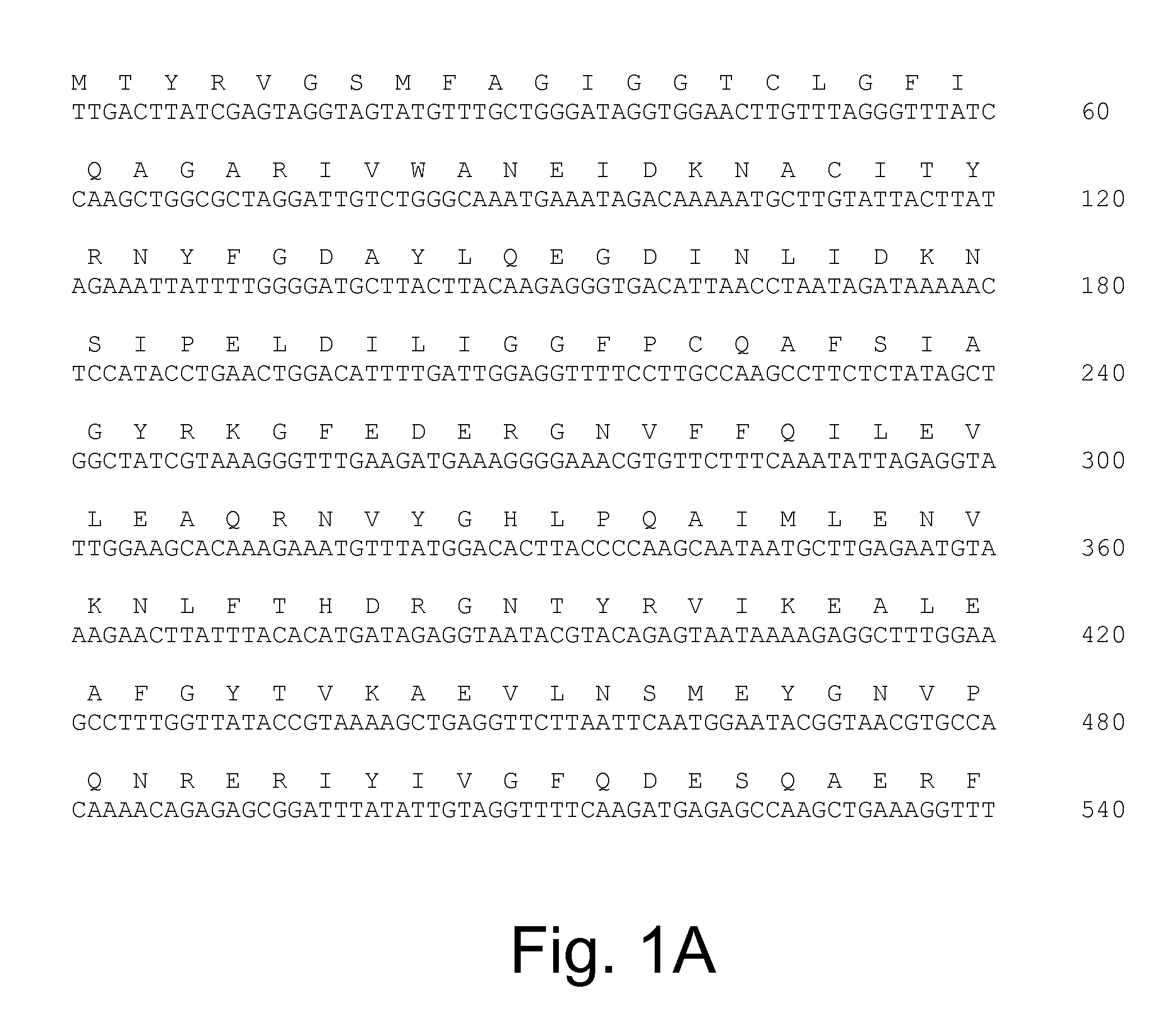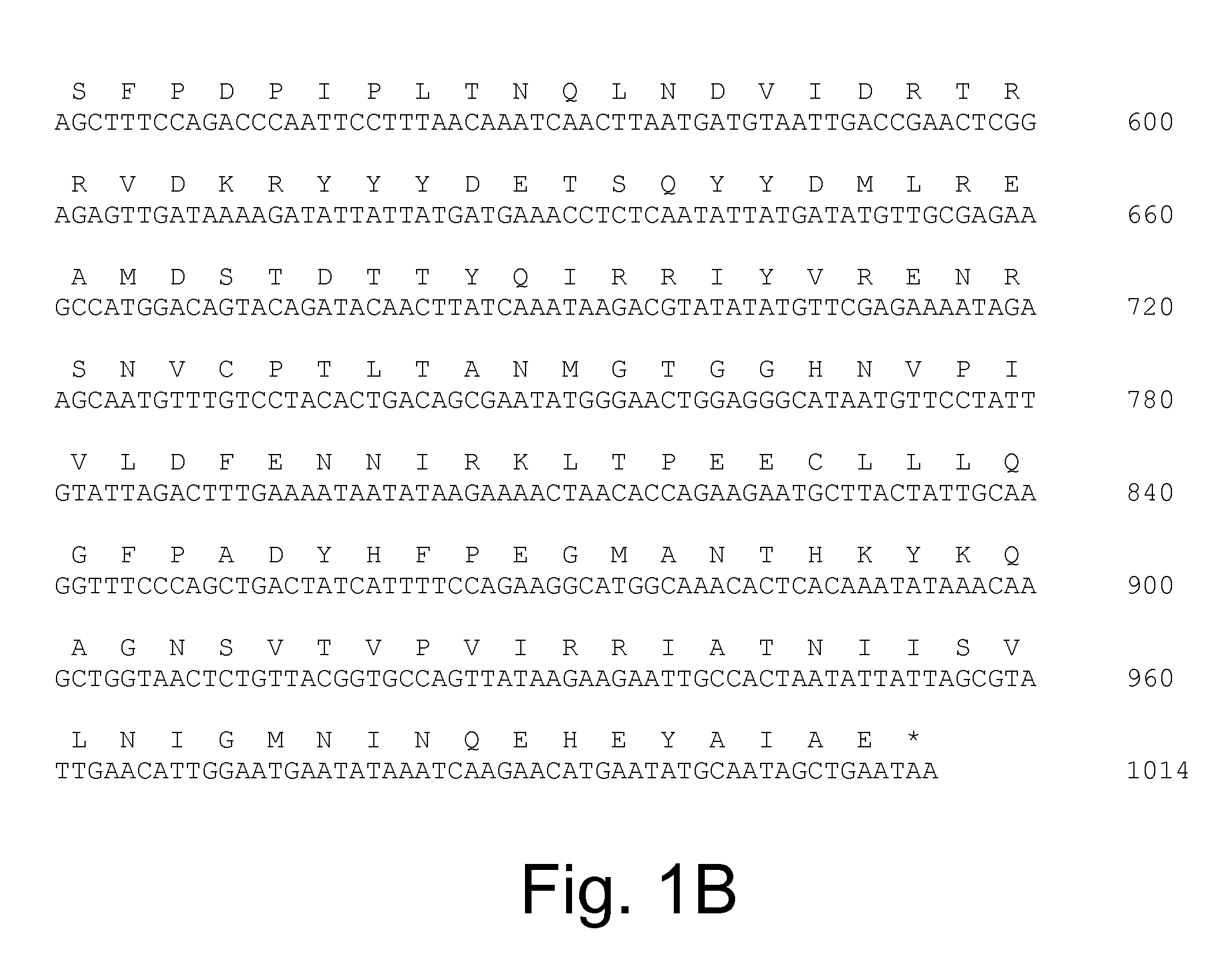Methods of improving the introduction of DNA into bacterial cells
a technology of host cells and dna, which is applied in the field of improving the introduction of dna into bacterial host cells, can solve the problems of few, if any, transformants
- Summary
- Abstract
- Description
- Claims
- Application Information
AI Technical Summary
Benefits of technology
Problems solved by technology
Method used
Image
Examples
example 1
Determination of the Genome Sequence for Bacillus licheniformis Strain SJ1904
[0252]The genome sequence for the entire chromosome of Bacillus licheniformis strain SJ1904 was determined from contigs generated using 454 DNA sequencing technology (Margulies et al., 2005, Nature 437: 376-380), random paired reads using Sanger sequencing technology, and, to close gaps and resolve repeats, reads from PCR fragments of genomic DNA. Sequencing data was assembled using Phrap, and edited and viewed in Consed. Gene models were predicted from the genomic DNA sequence using Glimmer (Delcher et al., 1999, Nucleic Acids Research 27: 4636-4641). Gene models were machine annotated by comparison to the nonredundant database PIR-NREF (Wu et al., 2002, Nucleic Acids Research 30: 35-37) using a BLASTP with an E-value threshold of 1×10−5.
example 2
Identification of Bacillus licheniformis M.B111904II DNA Methyltransferase Gene
[0253]The deduced amino acid sequences for the Bacillus licheniformis strain SJ1904 gene models were compared to the protein sequences from REBASE (Roberts, R. J., Macelis, M., Rebase. 2005) using BLASTP (Altschul et at, 1997, Nucleic Acids Research 25: 3389-3402). As the DNA methyltransferases have a moderate level of sequence conservation, this analysis identified all putative DNA methyltransferases in this genome. A cytosine-specific DNA methyltransferase signature was identified within
[0254]M.Bli1904II using Prints-S version 16 as implemented through interProScan release v3.3. In addition; the six highly conserved motifs found in cytosine-specific DNA methyltransferases (Kumar of al., 1994, Nucleic Acids Research 22 1-10) were found to be conserved in the Bacillus licheniformis M.Bli1904II DNA methyltransferase.
example 3
Characterization of the Bacillus licheniformis M.Bli1904II DNA Methyltransferase Gene
[0255]The nucleotide sequence (SEQ ID NO: 1) and deduced amino acid sequence (SEQ ID NO: 2) of the Bacillus licheniformis M.Bli1904II DNA methyltransferase gene are shown in FIGS. 1A and 1B. The coding sequence is 1014 bp including the stop codon. The coding region is 36.1% G+C. The encoded predicted protein is 337 amino acids with a molecular mass of 38.5 kDa.
[0256]A comparative pairwise global alignment of amino acid sequences was determined using the Needleman-Wunsch algorithm (Needleman and Wunsch, 1970, supra) as implemented in the Needle program of EMBOSS with gap open penalty of 10, gap extension penalty of 0.5, and the EBLOSUM62 matrix. The alignment showed that the deduced amino acid sequence of the Bacillus licheniformis M.Bli1904II DNA methyltransferase shared 64% identity with a Bacillus weihenstephanensis C-5 cytosine-specific DNA methyltransferase precursor (UniRef100_Q2AVE0) and share...
PUM
| Property | Measurement | Unit |
|---|---|---|
| volume | aaaaa | aaaaa |
| Tm | aaaaa | aaaaa |
| Tm | aaaaa | aaaaa |
Abstract
Description
Claims
Application Information
 Login to View More
Login to View More - R&D
- Intellectual Property
- Life Sciences
- Materials
- Tech Scout
- Unparalleled Data Quality
- Higher Quality Content
- 60% Fewer Hallucinations
Browse by: Latest US Patents, China's latest patents, Technical Efficacy Thesaurus, Application Domain, Technology Topic, Popular Technical Reports.
© 2025 PatSnap. All rights reserved.Legal|Privacy policy|Modern Slavery Act Transparency Statement|Sitemap|About US| Contact US: help@patsnap.com



